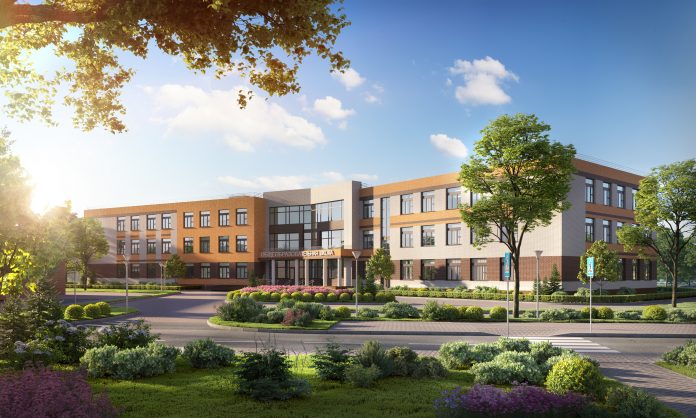Gary Cawley, director of CPC, explores the best way for providers to engage architects, engineers, consultants and contractors to carry out upgrades to schools and public buildings
The government’s pledge to ‘level up’ the country in the aftermath of the Covid-19 pandemic, coupled with the drive towards net zero, has led to a swathe of public funding programmes and investment schemes to help local councils improve their building stock.
Eighteen months of disruption to schooling has shone a spotlight on the inequalities of education opportunities and the importance of creating the right environment for learning.
With many schools across the country in disrepair, in February 2021, the government announced the first phase of a ten-year School Rebuilding Programme. Projects include primary, secondary, special schools and sixth forms and range from replacing or refurbishing individual buildings through to whole school rebuilds and cover.
More than 70% of the first 50 schools were in the North and Midlands and a further 50 schools were added to the list in the second phase of the programme this summer.
The builds and refurbishments aim to provide modern education environments and improved facilities while also being more energy-efficient, helping to meet net zero targets. It is expected the programme will also help create jobs, apprenticeships and training opportunities across England.
Funding for public sector projects has also been released through the latest phase of the Government’s Public Sector Decarbonisation Scheme. Phase 3 of this scheme launched at the start of October and is open until early November 2021.
As we discussed in the spring, this scheme aims to support the public sector in taking a ‘whole building’ approach, combining heat decarbonisation with energy efficiency measures. In particular, it will provide funding for decarbonisation projects where the heating systems are at the end of their working lives and there is an imminent need for replacement.
However, securing funding for rebuild and refurbishment projects is just the first step of the journey. Once budgets are agreed, what is the best way for providers to engage architects, engineers, consultants and contractors to carry out the work?
The answer is trusted local frameworks. More and more education providers and local councils are using procurement frameworks for these sorts of construction and refurbishment projects, tapping into the expertise of local teams who have pre-vetted and approved local suppliers.
Since launching our schools and community buildings framework nine years ago, we’ve helped to procure works on everything from the construction of a new £30m secondary school, to the painting and decorating of classrooms.
Why procure through a framework?
Speaking to our clients, they recognise the value of a framework’s in-built flexibility in procurement routes, and the ability to make a ‘fast track’ appointment of a supplier.
This can lead to significant cost, time and effort savings at the pre-construction phase, and it helps to establish an efficient and fruitful working relationship between client and supplier, meaning more value can be derived throughout the life of the project.
Education and public sector projects that have been successfully delivered through our frameworks include a three-storey new build for the Degree Apprentice Centre at the University of Warwick in Coventry. Delivered by Kier, the project was completed on budget and on time within 18 months of inception, including 54 weeks of onsite construction.
Elsewhere, the Highland Council partnered with Morrison Construction for the refurbishment of the grade-B listed Inverness High School. Fourteen classrooms, offices and a brand-new state-of-the-art biomass energy centre were built during the first phase of the project, with works ongoing in a live school environment.
Subsequently, the Highland Council reused our framework to procure Kier to build the new £15m Ness Castle Primary School in Inverness.
Other examples of successful projects using our frameworks include the replacement of flat roofs and the provision of temporary accommodation at Walthamstow School for Girls, and the construction of the council-backed Boho 8, a campus development for digital and creative businesses in Middlesbrough.
Introducing a new framework for public buildings
We had so much interest in our previous Schools and Community Buildings framework that this autumn, we’ve launched a new version. The new Public Buildings (PB3) framework expands its scope to include construction of new buildings, extensions, and refurbishment of public and social buildings and infrastructure works as well.
Suitable for public building projects including education, healthcare, student accommodation and community buildings, this framework will run for four years until 30th September 2025.
We’ve also split refurbishment from new build in the lower project value bands to help with ease of procurement, and to encourage local, specialist firms to bid to be on our supplier list.
While looking at suppliers for the framework, we’ve done so with the country’s net zero goals in mind, so have assessed their capability for delivering low energy and zero carbon buildings, including any prior BREEAM credentials.
Capability in delivering Special Educational Needs Schools has also been factored in to ensure we have the right skills within the framework for such projects.
More details about our new PB3 framework can be found here, including details of the suppliers.
If you have an education or public building project that you’re starting to get off the ground, we can help you to manage your project through our free to use frameworks. Working with CPC makes it easy to deliver your project successfully on time, on budget and to high quality standards. For more information or to arrange an initial chat, get in touch here.














